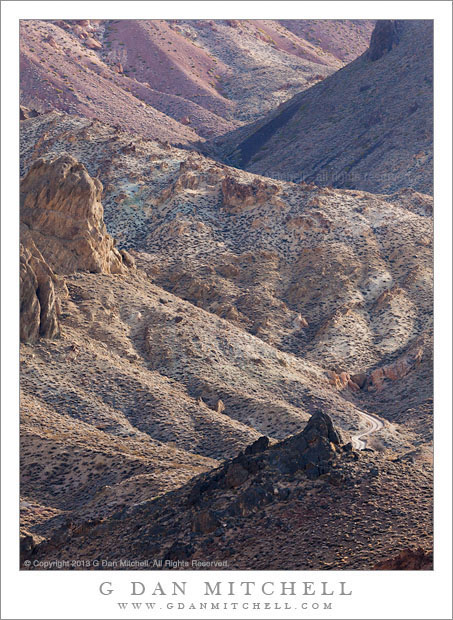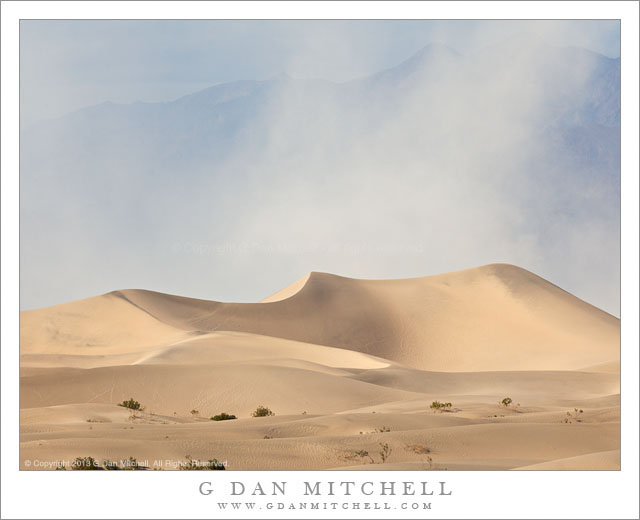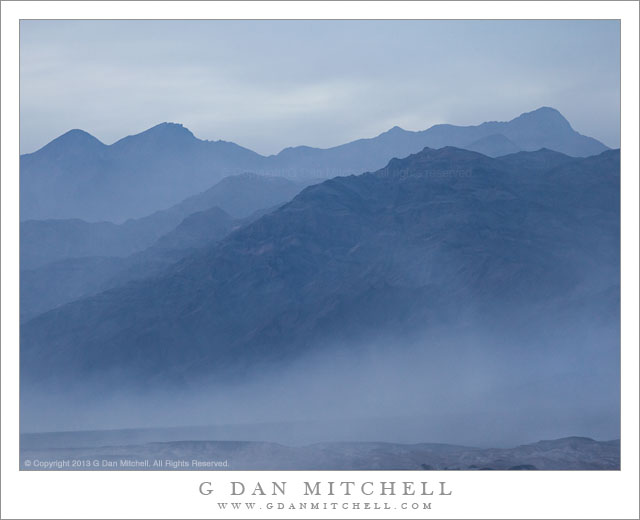
Abandoned Buildings, Leadfield. Death Valley National Park, California. April 6, 2013. © Copyright 2013 G Dan Mitchell – all rights reserved.
Abandoned buildings at the site of the Leadfield mines, Death Valley National Park
In a way there is really nothing that special about Leadfield. It is one of many, many abandoned outposts and mining sites found all over California and, for that matter, all over the West. These sites remain, though precariously in some cases, as a reminder of a number of things: history that is not all that distant, the people who must have been willing to come to such places and attempt to scratch out a living by mining, the human capacities for misleading others and for falling victim to those who would mislead, and the temporal nature of things that might seem permanent at the time.
I’m no historian, but I can share a few facts about this particular spot. In the 1920s the town – with some semi-permanent buildings and reportedly many tents – came into existence and died again in the span of less than a single year. Although the reports of ore in the area and situation that might allow it to be successfully mined were wild exaggerations or downright lies, a road was built into this rugged area, work was started on a mill, and today there is still plenty of evidence of mines all around the area. I made this photograph from the tailings pile at the entrance to what I think may be the main mine shaft, looking out over the site in what I imagine might be the direction that a person working that mine might have looked. I wonder it these people took as much notice as I did of the tiny and inconsequential appearance of the human landscape against the vast and rugged natural landscape beyond?
 G Dan Mitchell is a California photographer and visual opportunist whose subjects include the Pacific coast, redwood forests, central California oak/grasslands, the Sierra Nevada, California deserts, urban landscapes, night photography, and more.
G Dan Mitchell is a California photographer and visual opportunist whose subjects include the Pacific coast, redwood forests, central California oak/grasslands, the Sierra Nevada, California deserts, urban landscapes, night photography, and more.
Blog | About | Flickr | Twitter | Facebook | Google+ | 500px.com | LinkedIn | Email
Text, photographs, and other media are © Copyright G Dan Mitchell (or others when indicated) and are not in the public domain and may not be used on websites, blogs, or in other media without advance permission from G Dan Mitchell.



